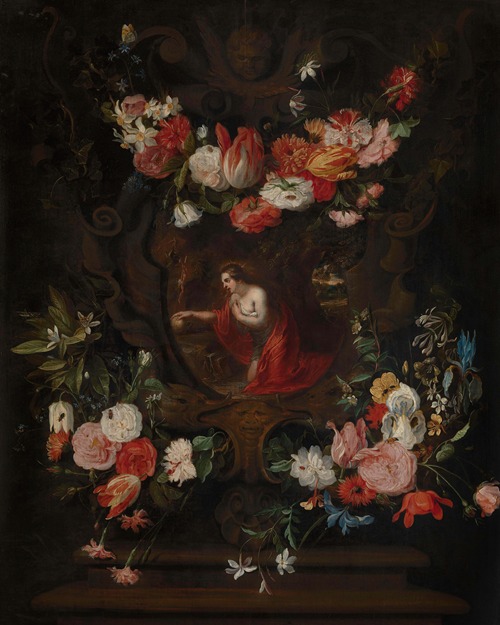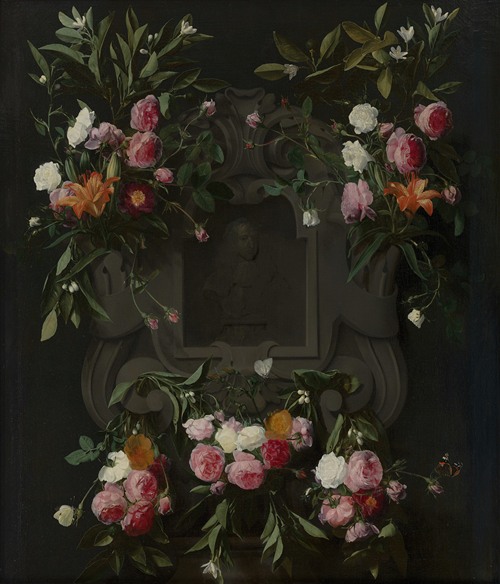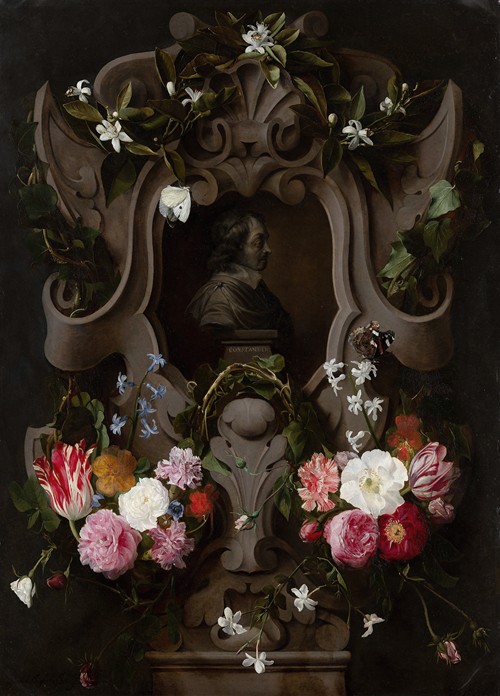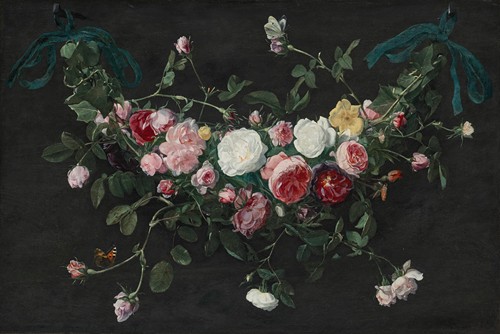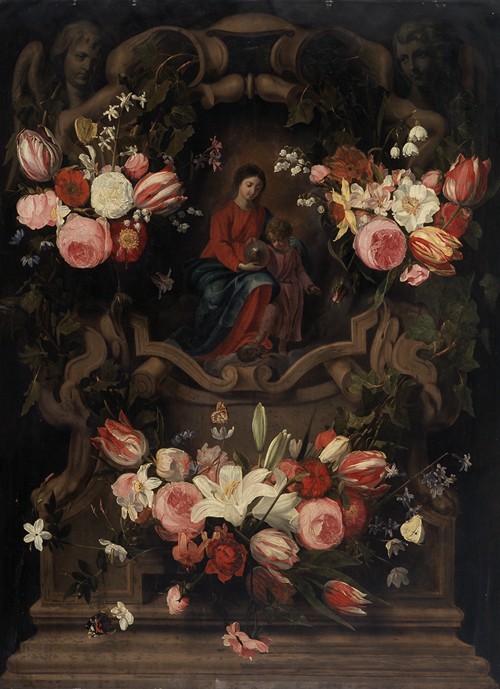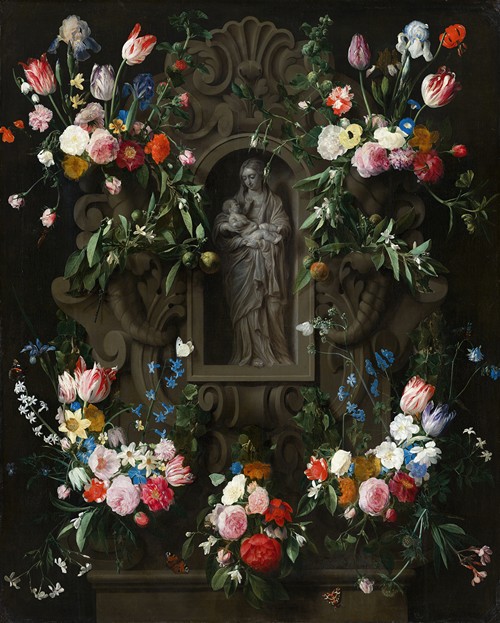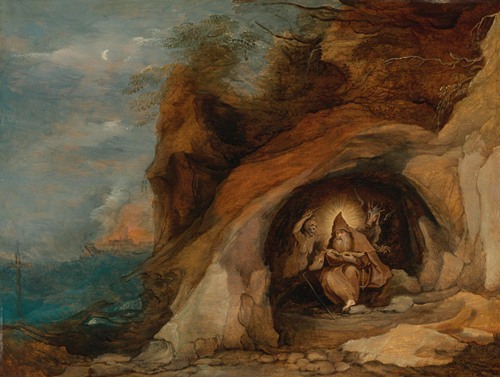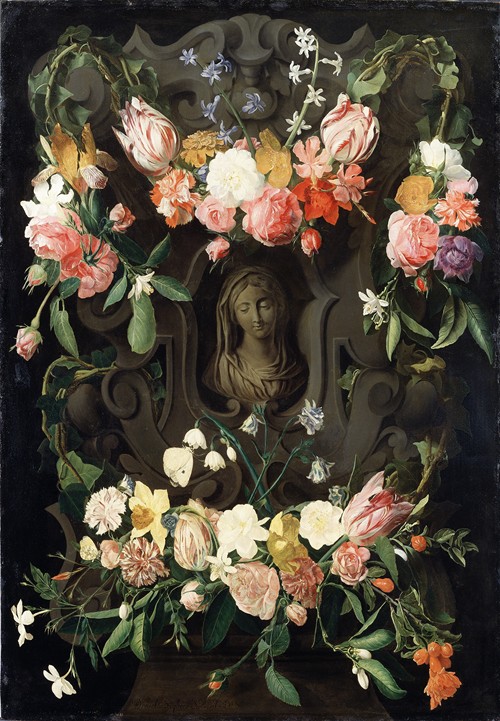
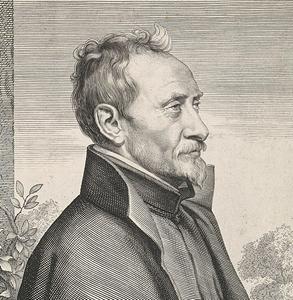
Daniël Seghers or Daniel Seghers was a Flemish Jesuit brother and painter who specialized in flower still lifes. He is particularly well known for his contributions to the genre of flower garland painting. His paintings were collected enthusiastically by aristocratic patrons and he had numerous followers and imitators.
Seghers was born in Antwerp. He moved with his mother to the Dutch Republic, probably Utrecht around 1601, following the death of his father Pieter and the conversion of his mother to Calvinism. He possibly started his initial training as an artist in Utrecht. The young artist returned to Antwerp by 1611, where he was enrolled in the Guild of Saint Luke as a pupil of Jan Brueghel the Elder.
Seghers re-converted to Catholicism and in 1614 he became a novice in the Jesuit order in Mechelen. Seghers is recorded in Brussels in 1621 where he is known to have produced two flower garland paintings for the Cathedral of St. Michael and St. Gudula. In 1625 Seghers took his final vows as a Jesuit priest. Sources differ regarding his status in the Jesuit order: some claim that he was ordained a priest in 1625, while others argue that he remained a lay brother.
After his ordination in 1625 Seghers left for Rome where he stayed for two years. In Rome, Seghers had the opportunity to work on projects with the leading painters: he collaborated with Nicolas Poussin on a few religious paintings, while for Cardinal Ludovisi, Seghers painted a flower garland around an oval cartouche filled with putti by the hand of the Italian painter Domenichino. The composition is referred to as Double wreath surrounding a medaillion with the triumph of love.
Seghers returned to his native city in 1627 where he continued to work as a painter for the remainder of this life. Seghers was visited in his studio in Antwerp by the Cardinal-Infante Ferdinand of Austria (in 1635), Archduke Leopold Wilhelm of Austria (in 1641), Queen Christina of Sweden and Charles II, King of England (both in 1649). He is known to have painted a cartouche of flowers for Charles II. His work was also much admired by his fellow artists, including Rubens.
His pupils included Jan Philip van Thielen, Ottmar Elliger and Ignace Raeth and likely also Andries Bosman.
